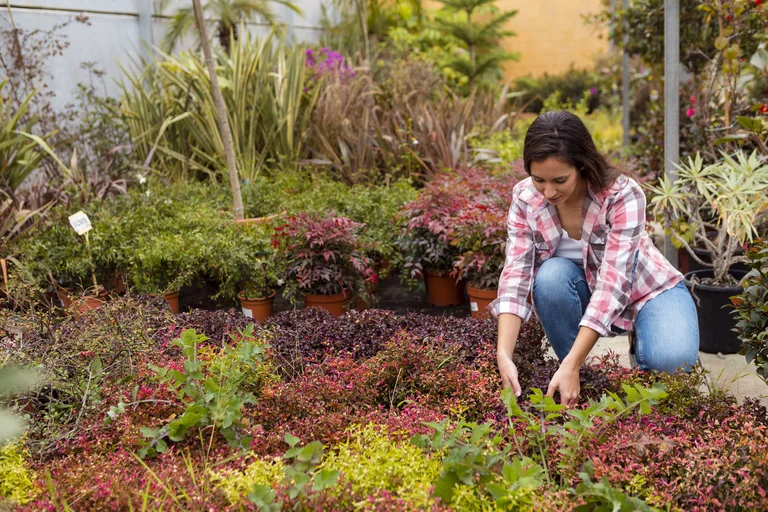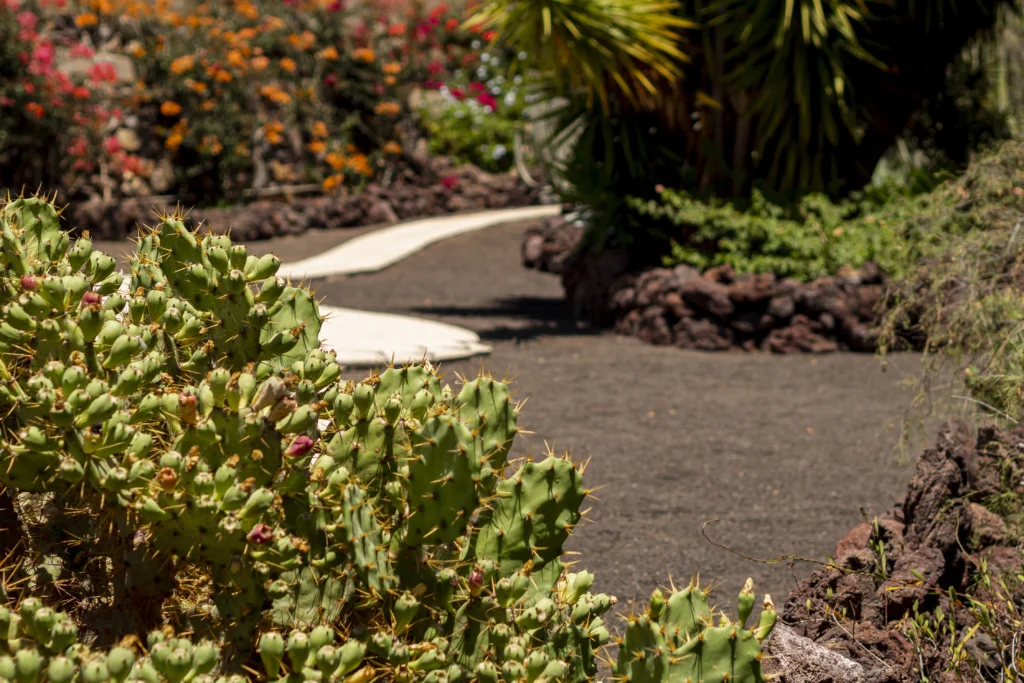
8 Best Drought Tolerant Plants For Low Water Landscapes
In today’s world, where water conservation is becoming increasingly important, choosing the 8 best drought-tolerant plants is one of the smartest & easiest ways to create a sustainable garden. Not only does it help save water, but it also reduces maintenance and water bills. By choosing the right plants, you can enjoy a vibrant and healthy garden without the need for constant watering. In this blog, we’ll explore the top 8 drought-tolerant plants, their benefits, and how you can design a water-smart garden that thrives even in dry conditions.
What Are Drought-Tolerant Plants?
Plants that have adapted to live with very little water are known as drought-tolerant plants. Their unique characteristics—such as small leaf surfaces, slippery leaves, or deep root systems—allow them to survive in dry conditions by keeping moisture. Once established, these plants will continue to look fantastic in your garden even after extended droughts.
With the correct plant selection, you can make a low-water garden that saves water, requires less maintenance, and serves as a haven for nearby wildlife.
Benefits of Drought-Tolerant Plants:
Water Conservation:
Drought-tolerant plants use far less water compared to traditional garden plants. They are especially beneficial in areas where water shortages are common. By choosing these plants, you can still enjoy a healthy and colorful garden. At the same time, you’ll be playing your part in saving valuable water resources.
Low Maintenance:
These plants are easy to care for, which makes gardening simpler. You’ll water them less often, treat pests less, and spend less time on upkeep. This means more time enjoying your garden and lower water bills, which saves you money in the long run.
Eco-Friendly:
Planting drought-tolerant species helps create a more sustainable lifestyle. These plants reduce water waste, conserve resources, and protect the planet. Many also attract pollinators, boosting local biodiversity. With them, you build a garden that’s both beautiful and eco-friendly.
Cost-Effective:
One of the biggest advantages of drought-tolerant plants is their cost-effectiveness. Since they need less water, you save on monthly utility bills over time. These plants also require fewer fertilizers, treatments, and gardening supplies. Overall, they make your garden both budget-friendly and sustainable.

8 Best Drought-Tolerant Plants for Your Garden:
Let’s explore a few of the best plants that can transform your garden into a flourishing low-water garden.
1. Lavender:
Lavender is not only drought-tolerant but also fragrant and beautiful. It attracts bees and butterflies, making it a pollinator-friendly choice.
Best for: Rock gardens, borders, or as a focal point in the landscape.
Watering needs: Very low, once established.
Maintenance: Minimal; prune once a year to maintain its cleanliness.
1. Succulents and Cacti:
Classic drought-tolerant plants include cacti and succulents: They endure protracted dry spells because they store water in their leaves or stems.
Best for: Ground covers, container gardens, or rock gardens.
Watering needs: Low to very low; water only when the soil is arid.
Maintenance: Just remove any dead leaves and occasionally trim.
3. Yarrow:
A durable, low-maintenance perennial, yarrow grows best in full sun and dry soil. Renowned for its vivid clusters of yellow, pink, red, and white flowers, yarrow is a great way to add some color to your landscape. Once established, it can withstand extreme droughts and is excellent at drawing pollinators.
Best for: Wildflower gardens, borders, and meadow-style gardens.
Watering needs: Low, once established.
Maintenance: Minimal; deadhead spent flowers and trim back in the fall.
4. Blanket Flower:
Beautiful perennial plants that endure drought, blanket flowers have bright, daisy-like blooms in red, orange, and yellow. Once established, these resilient plants need little maintenance and can flourish in dry, poor soils. They are also excellent at drawing pollinators, such as butterflies.
Best for: Garden beds, wildflower gardens, and borders.
Watering needs: Low to moderate; needs less watering after the first year.
Maintenance: Low; just trim back dead flowers to encourage new blooms.
5. Russian Sage:
Russian sage is a flower with lavender-like purple-blue flowers and tall, silvery-green stems. It is ideal for a low-water landscape because it grows best in full sun and well-drained, dry soil. Russian sage gives your garden life and is also a favorite of bees and butterflies.
Best for: Borders, pollinator gardens, or as a backdrop plant.
Watering needs: Very low; drought-tolerant once established.
Maintenance: Low; prune in early spring to remove dead growth.
6. Salvia:
Salvia, often referred to as sage, is a genus of plants that includes several drought-tolerant types, such as Salvia greggii and Salvia nemorosa. Hummingbirds especially love these plants, which bear spikes of blue, purple, red, or pink flowers. Salvia is ideal for low-water landscapes because it prefers full sun and dry, well-drained soil.
Best for: Pollinator gardens, borders, and as a specimen plant.
Watering needs: Low to moderate, depending on the variety.
Maintenance: Minimal; deadhead flowers to encourage re-blooming.
7. Coneflower:
Native and hardy, coneflowers are ideal for low-water landscapes. Any garden is brightened by its striking, delicate flowers in pink, purple, and white. Bees, butterflies, and birds, especially hummingbirds, which adore the seeds, are all drawn to coneflowers.
Best for: Wildflower gardens, cottage gardens, and pollinator-friendly landscapes.
Watering needs: Moderate to low; once established, they can withstand drought.
Maintenance: Low; deadhead to prolong blooming and trim back in fall.
8. Gaura:
Gaura is a perennial plant that produces delicate, butterfly-like flowers on tall stems. These flowers are typically white, pink, or magenta, adding a soft, airy feel to your garden. Gaura thrives in full sun and well-drained, dry soil, and it’s perfect for attracting pollinators.
Best for: Borders, wildflower gardens, or as a filler plant.
Watering needs: Low to moderate; can tolerate drought after the first year.
Maintenance: Low; trim back in early spring to encourage fresh growth.
Tips for Creating a Low-Water Landscape:
Choose Native Plants:
Native plants are naturally adapted to local climates, so they thrive with less water and care. They blend seamlessly into your landscape while conserving resources.
Group Plants by Water Needs:
Group plants with similar water needs together. This makes watering more efficient and helps prevent water waste in your garden.
Use Mulch:
Mulch helps conserve soil moisture by slowing evaporation, keeps roots cool during hot weather, and suppresses weed growth. By adding mulch around your plants, you’ll reduce the need for frequent watering and keep the soil rich.
Install Drip Irrigation:
A drip irrigation system delivers water directly to plant roots, reducing waste compared to traditional sprinklers. It provides consistent hydration without overwatering, helping plants thrive. This method saves both water and effort while ensuring garden efficiency.
In short, with the right mix of native plants, smart watering, and soil care, you can create a thriving low-water garden. Not only does it save resources, but it also makes your landscape more resilient and sustainable.
Adding these 8 best drought-tolerant plants to your garden is a smart way to save water, reduce maintenance, and still enjoy a lush landscape. Whether you’re building a low-water garden or experimenting with water-efficient landscaping, these plants ensure long-lasting beauty with minimal effort.
FAQs
Q1. Are drought-tolerant plants low-maintenance?
Yes, these plants generally require much less maintenance than traditional garden plants. With less water and fewer treatments needed, they save you time and effort. They’re perfect for busy homeowners who want a vibrant garden without all the work.
Q2. Can drought-tolerant plants grow in any soil?
Ans. Most drought-tolerant plants can adapt to various soil types, but they thrive in well-draining soil. Heavy or waterlogged soil can damage their roots, so it’s essential to prepare the ground properly. Adding compost or sand can improve soil conditions.
Q3. Which drought-tolerant plants grow well in hot climates?
Ans. Plants such as lavender, succulents, Russian sage, and yarrow thrive in hot climates. They can handle high heat and dry soil, making them perfect for warm regions.
Q4. Can drought-tolerant plants survive in pots or containers?
Ans. Absolutely! Many drought-tolerant plants thrive in pots. Just use well-draining soil and avoid overwatering, and they’ll stay healthy even in containers.
Q5. Can drought-tolerant plants grow in any soil?
Ans. Most drought-tolerant plants can grow in various soil types, but they thrive in well-draining soil. Heavy or waterlogged soil can damage their roots, so it’s important to prepare the ground properly. Adding compost or sand can help improve soil conditions.
Read more related article> https://www.climatechallange.com/10-expert-secrets-to-growing-your-own-veggie-garden/